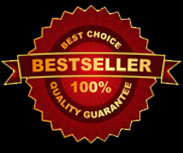Back in the day, that day being in the 1980s, Maureen "Mo" Canady's saucer-sized prescription eyeglasses were the height of fashion - and an empty palette begging to be filled.
"I always had my name or initials out on them, and there were lots and lots of decorations to put on your lenses," said Canady, who works part time at In-Sight Optical in Colorado Springs. "You could do engraving, like a butterfly with a little stone. That was the bling back then."
The look of an era is often encapsulated in its spectacles, a medical device that in the 800 years since its anonymous invention has managed to become a ubiquitous fashion accessory even among the 20/20 set.
In the 1950s, thick horn-rimmed and cat-eye styles ruled, while the latter part of the '60s saw a move toward circular, more delicately-framed models like those worn by John Lennon. Then came the headlight-sized lenses of the '70s - favored by former first lady Jacqueline Kennedy Onassis - and the '80s, when trendy four-eyers liked to bedazzle their massive glasses.
Before the turn of the 20th century, though, the only statement you really made wearing a pair of spectacles was "I can't see."
"The first thing to really get your head around is that eyeglasses are not fashion," said Jenny Benjamin, director of the Museum of Vision in San Francisco. "They were created for the old and infirm, which is unfortunately where their reputation got off on the wrong foot."
In the 18th and 19th centuries, popular devices for vision correction such as scissor spectacles and lorgnettes weren't designed to be worn on the face but held up to the eyes when sharper vision was necessary, then folded up and discreetly stowed.
"They were really meant to hide your need to use them," Benjamin said. "You used them, then you put them away, hopefully far away, so nobody would really know you needed your eyeglasses at all."
By the latter half of the 19th century, though, the lorgnette had evolved into such a popular fashion accessory that style arbiters complained in an 1870 book on etiquette:
"The functions of the natural eye and eyeglasses are much abused. It is quite clear that the whole world of fashion has not all of a sudden become so afflicted with short sightedness as to render the use of artificial means for its relief universally necessary."
Those who needed full-time vision correction and could afford the cost might have engaged an artisan to craft a one-of-a-kind pair of temple frames into which corrective lenses could be set. With the Industrial Revolution and the growth of plastics manufacturing, the eyewear industry began to change. Molded plastic frames were cheap and easy to produce; suddenly, even the hoi polloi could afford to see well and look good doing it.
"That's when fashion really started to come into play and spectacles stopped being just medical devices and, if not entirely fashionable, you could at least buy a pair that was nice looking," Benjamin said.
In the early 20th century, popular styles included a tortoiseshell frame with large, round lenses favored by silent film actor and comedian Harold Lloyd, whose photos and movies ignited one of the nation's first Hollywood celebrity-driven fashion crazes.
By the late 1950s, demand had risen in Europe and the U.S. for eyeglasses that could hold their own as part of a fashionable ensemble; the "designer eyeglass" industry was born, to provide new seasonal style tweaks in perpetuity.
"The glasses styles, they do a 10- to 15-year cycle and they start coming back again," said Canady, who's seen countless trends wax, wane and return in the two decades she's worked at In-Sight Optical. "Now, a lot of people are wanting the John Lennon look again, but a little larger. The Zsa Zsa Gabor, that style's coming back, too."
When it comes to spotting future fashion trends, hindsight is often a good place for a designer to start.
"Vintage is still totally on trend, but it's the minor details, the minimal tweaks that give it the unique feel each season," said Michelle Lane, glasses designer and exclusive label manager at Coastal.com, based in Vancouver, B.C.
So, what's hot in spectacles for fall 2013? An edgy new twist on the lorgnette, perhaps?
"For fall 2013, for women, there's this trend we call 'Tough Girl' - classic feminine shapes but bolder, thicker, more in-your-face," Lane said. "It's almost kind of like creating a shield, but a shield that says look at me."
-
Contact Stephanie Earls: 636-0364
via fashion - Google News http://news.google.com/news/url?sa=t&fd=R&usg=AFQjCNGavsLFANx6r4R0NFJB46wL72nA0Q&url=http://gazette.com/the-focus-for-eyewear-is-on-fashion/article/1506262




0 意見:
張貼留言